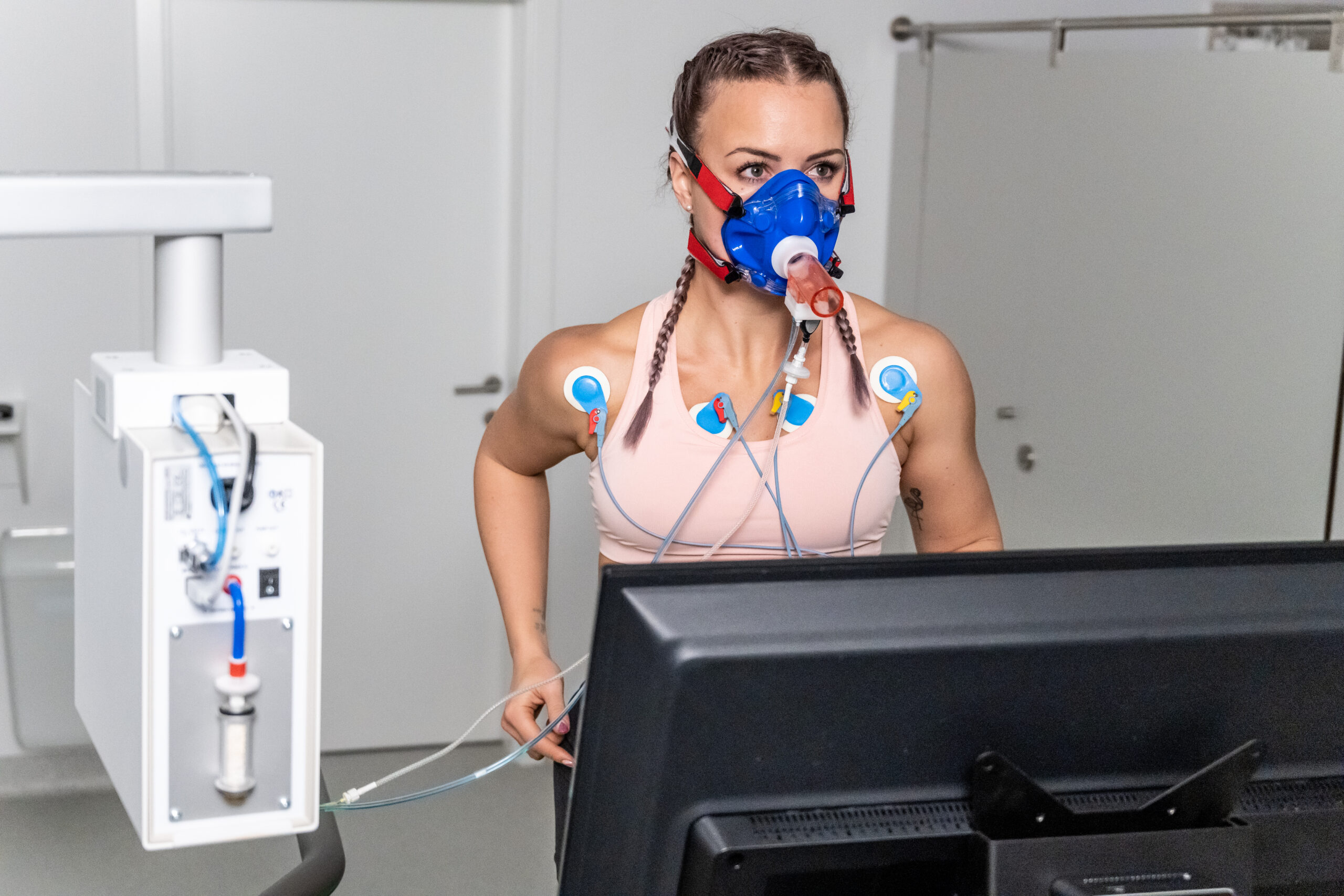


Why You Should Care:
Playlist
“VO2 Max (maximal) oxygen consumption refers to the maximum amount of oxygen that an individual can use during intense or maximal exercise. This measurement is generally considered the best indicator of cardiovascular fitness and aerobic endurance. The more oxygen a person can use during high level exercise, the more energy a person can produce. This test is the gold standard for determining cardiorespiratory fitness because the muscles need oxygen for prolonged aerobic exercise, and the heart must pump adequate amounts of blood to meet the demands of aerobic exercise.” (University of Virginia School of Medicine)
“Aerobic fitness (cardiovascular endurance) is the body’s ability to deliver oxygen to your muscles, which allows them to do work or engage in activity. The lungs take in oxygen from the air we breathe where it gets perfused into the blood stream; the heart and blood vessels deliver it into the working muscles; and the skeletal muscles utilize that oxygen to execute muscular contractions and produce work. A cardiovascular assessment is a good tool to measure the efficiency of the aforementioned physiological functions.
While there are numerous methods for evaluating aerobic capacity, in most instances treadmill walking/running is appropriate for the majority of individuals. Normative data correlates time on the treadmill with aerobic fitness. V̇O2 is an index of the body’s efficiency at producing work. It is expressed in milliliters of oxygen consumed per minute, and adjusted for body weight in kilograms: ml/kg/min. There are many factors that can influence V̇O2max, e.g. heredity, training, age, gender, and body composition. Generally, V̇O2max declines with age (about 2% per year after age 30) and males typically have a greater oxygen consumption value than females. Nevertheless, the trend is that a higher V̇O2 max allows one to produce more energy, thereby performing more work. With this in mind, V̇O2 max is the “gold standard” measure of overall fitness.
Significant amounts of research and public health data indicate that low aerobic fitness levels are correlated with an increased risk of premature death from many causes but in particular from cardiovascular disease. Accordingly, higher aerobic fitness levels are associated with numerous health benefits e.g. longer lifespan, better quality of life, reduced risks for stroke, heart disease, diabetes and cancer, improved mood and self-esteem, and improved sleep patterns. To improve or maintain cardiovascular health an individual must engage in cardiovascular exercise (run, walk, swim, bike, etc…) at least 3 times per week. Currently, however, public health data indicates that only 22-25% of Americans exercise regularly enough to achieve these positive health benefits.” (University California Davis Health)



